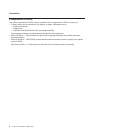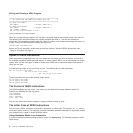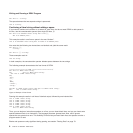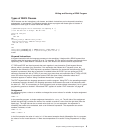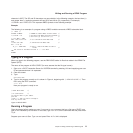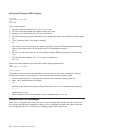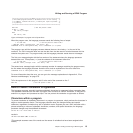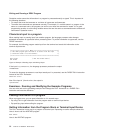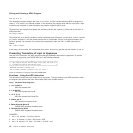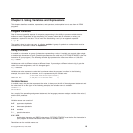
rexx hello
Hello! What is your name?
sam
Hello SAM
Here is what happens:
1. The SAY instruction displays Hello! What is your name?
2. The PULL instruction pauses the program, waiting for a reply.
3. You type sam on the command line and then press Enter.
4. The PULL instruction puts the word SAM into the variable (the place in the computer's storage) called
who.
5. The IF instruction asks, Is who equal to nothing?
who=""
This means, “is the value stored in who equal to nothing?” To find out, REXX substitutes that stored
value for the variable name. So the question now is: Is SAM equal to nothing?
"SAM" = ""
6. Not true. The instruction after then is not processed. Instead, REXX processes the instruction after
else.
7. The SAY instruction displays "Hello" who, which is evaluated as
Hello SAM
Now, here is what happens if you press Enter without typing a response first.
hello
Hello! What is your name?
Hello stranger!
Then again, maybe you did not understand that you had to type in your name. (Perhaps the program
should make your part clearer.) Anyhow, if you just press Enter instead of typing a name:
1. The PULL instruction puts "" (nothing) into the place in the computer's storage called who.
2. Again, the IF instruction tests the variable
who=""
meaning: Is the value of who equal to nothing? When the value of who is substituted, this scans as:
""=""
And this time, it is true.
3. So the instruction after then is processed, and the instruction after else is not.
Interpreting Error Messages
When you run a program that contains an error, an error message often includes the line on which the
error occurred and gives an explanation of the error. Error messages can result from syntax errors and
from computational errors. For example, the following program has a syntax error.
Writing and Running a REXX Program
12
CICS TS for VSE/ESA: REXX Guide



